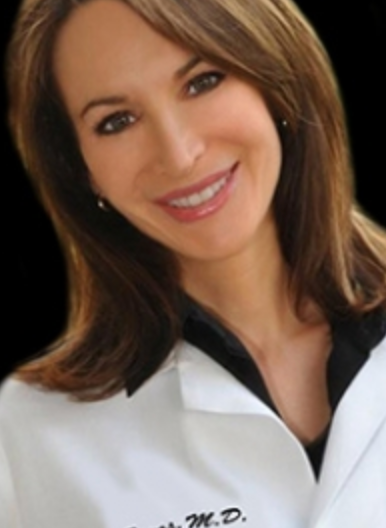Article
Help your patients embrace holiday glamour without worsening dry eye
Author(s):
The holiday season brings lots of good cheer and also worsens dry eyes-here's how your patients can effectively manage their symptoms.

Editor’s Note: Welcome to “Let's Chat,” a blog series featuring contributions from members of the ophthalmic community. These blogs are an opportunity for ophthalmic bloggers to engage with readers with about a topic that is top of mind, whether it is practice management, experiences with patients, the industry, medicine in general, or healthcare reform. The series continues with this blog by Melissa Toyos, MD. The views expressed in these blogs are those of their respective contributors and do not represent the views of Ophthalmology Times or UBM Medica.
The holiday season bring lots of good cheer and also worsens dry eyes. Indoor heat lowers already low winter humidity levels and on top of that, patients are getting dressed up for events and parties where beauty-related dry eye problems abound.
Makeup is a major offender. Some patients with severe dry eye often find it virtually impossible to wear eye makeup. However, the majority of dry eye sufferers do try to glam up, and we can help them by making recommendations for products and treatments that can facilitate their holiday season and improve their resilience to the season’s challenges.
Beauty product problems
For many of my patients, makeup and beauty products are not optional. I try to minimize dry eye problems related to these products by telling them my recommendations for cosmetics and reminding them to always remove all makeup before bed, no matter how late they’re getting there.
- Mascara – We’ve all seen mascara flecks in the tear film on slit lamp exams. There is no question that these products take their toll chemically, with a host of chemical ingredients. Mechanically, the flecks are uncomfortable and can be abrasive. “Thickening” and “lengthening” mascaras are particularly problematic because they incorporate fibers to create the desired effect, and the fibers can irritate the eyes.
- Eyeliner – Eyeliner can irritate the eye and contribute to dry eye simply because it is used on the eyelids. At the base of the lashes, it can harbor bacteria and be difficult to remove completely. Using eyeliner on the inside of the upper or lower eyelids can dramatically define the look of the eye, but it also can adversely affect the meibomian glands and tear film.
- Eye shadow and powder – Any powdered makeup-eye shadow, face powder, bronzer, glitter, and so on-inevitably ends up in the eyes, causing problems that are similar to mascara flakes. People with dry eye may prefer to stick to cream-based products instead of powder.
- Lash growth products – Lash growth products containing prostaglandins are known to be pro-inflammatory-in fact, I reported on the first case of MGD associated with them. However, many of my patients consider these products mandatory, so I adjust with additions of high-quality fish oil, topical anti-inflammatories, and/or intense pulsed light (IPL) to reduce inflammation and reverse the damage.
- Eye makeup remover – Virtually all eye makeup removers contain detergents, which break up the tear film’s lipid layer. Currently, there are no great alternatives, but I steer my patients toward non-petroleum oil-based products.
- Eye cream – Patients with dry eye need to eliminate drying agents like retinoids, especially near the eye. I recommend creams without retinoids that instead contain peptides, which activate collagen-building fibroblasts. Hyaluronic acid is great to use in this delicate area too. (Yes, hyaluronic acid is good.) I try to minimize preservatives and fragrances in this delicate area.
- Eye whiteners – To make tired eyes look whiter, brighter and more radiant, I recommend brimonidine tartrate ophthalmic solution 0.025% (Lumify, Bausch + Lomb), an FDA-approved eye whitener. One drop works within minutes and lasts up to 8 hours.
Treatment for healthy eyes
In addition to educating patients about beauty products, I think the best defense is to make sure that they start the season with the healthiest eyes possible. I use IPL therapy (Optima IPL, Lumenis), which allows us to solve several issues simultaneously. IPL rejuvenates skin in the eye area, reduces ocular surface inflammation, closes off lid margin telengiectasias, improves meibomian gland function, and can even increase the number of working glands over time.
I also prescribe cyclosporine (Restasis, Allergan; Cequa, Sun Pharma) and lifitegrast (Xiidra, Shire), as well as loteprednol (Lotemax, Bausch & Lomb) for acute flares. I offer platelet-rich plasma tears made with an advanced centrifuge technology (Genius PRP, Reinvent Biologics) and a natural preservative-free tear product containing chamomile, aloe vera, and other natural anti-inflammatories. With dry eye disease under control-and, hopefully, with some beauty tips heeded-my patients can sail through the holidays with fresh, clear, healthy eyes.
Disclosures:

Melissa Toyos, MD
P: 901/683-7255
Dr. Toyos is a partner and research director at Toyos Clinic in Nashville, Tennessee. She is a consultant for Iridex; speaker and consultant for Valeant and Sun; researcher for Kala, Lumenis, Magellan, Novaliq, Opternative, and Sun; speaker, consultant and researcher for Shire, Mallinckrodt, and Mixto Lasering; and consultant and researcher for DigiSight
Newsletter
Don’t miss out—get Ophthalmology Times updates on the latest clinical advancements and expert interviews, straight to your inbox.




